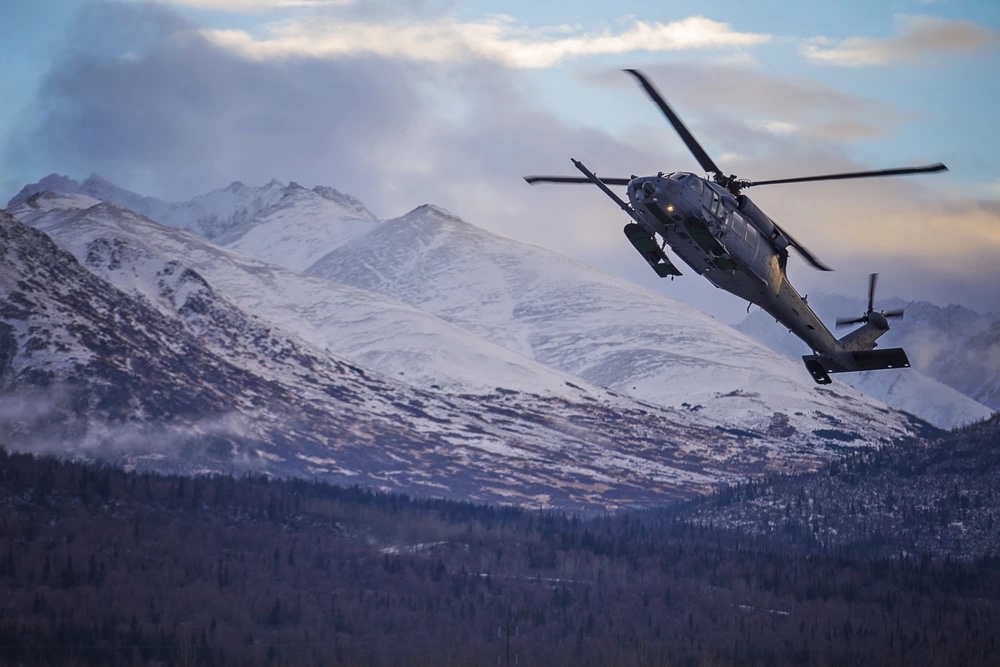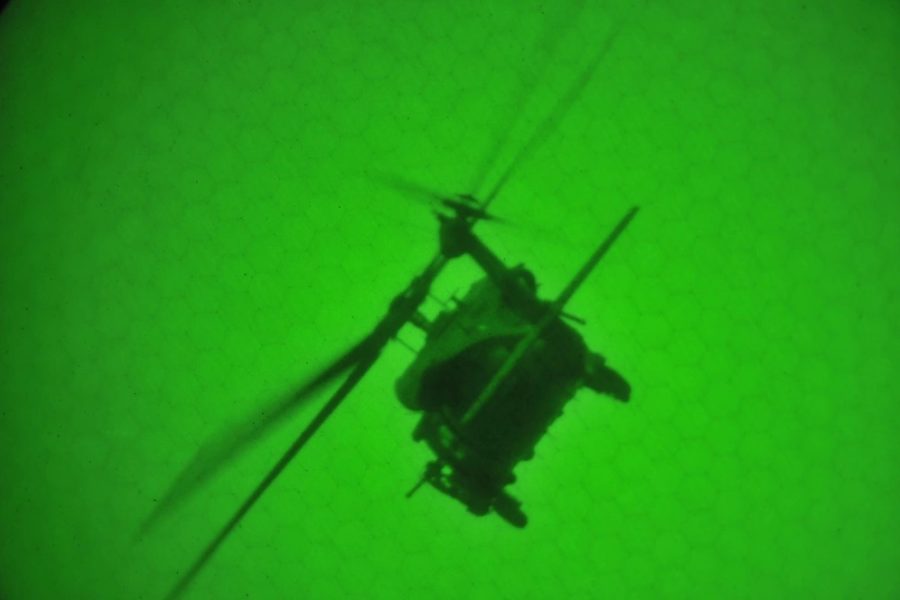The Army and Air National Guard need to sharpen their strategies for promoting safety and mitigating risk in helicopter units, the Government Accountability Office wrote in a report released April 12.
From fiscal year 2012 to 2021, there have been 298 accidents involving National Guard helicopters during noncombat flights. The GAO determined many of these accidents were caused by human error, with broader institutional issues that also need to be addressed.
Though some of the GAO’s report and recommendations apply more to the Army National Guard than the Air National Guard, the common ones include not routinely evaluating processes for preflight risk assessment; overworking unit safety officers; and pilots not getting enough flight hours due to lack of maintenance, funding, staffing, or other organizational shortfalls.
The report comes in the wake of two deadly Army helicopter accidents that occurred earlier this year. The first occurred in February when a Tennessee Army National Guard Black Hawk helicopter crashed during a training sortie in Alabama. The second occurred in March when two Black Hawks from the 101st Airborne Division crashed in Kentucky. Two Soldiers were killed in the first crash, while nine were killed in the second.
Though both the Army and Air National Guard have a range of safety and risk reduction measures, the components can do more to make sure those measures are being implemented effectively, the GAO report states.
The Data
Of the 298 helicopter accidents reported by Army and Air National Guard from 2012 through 2021, 45 were serious Class A or Class B accidents that involved death, permanent disability, prolonged hospitalization, or more than $500,000 in damages—40 involving Army National Guard helicopters, five involving Air National Guard helicopters.. The worst of those accidents killed 28 Guardsmen.
The discrepancy between the Army and Air Force Guards is likely due in part to the difference in flying hours between the two components—the Army National Guard flies helicopters for an average of 200,000 hours per year, while the ANG averages 3,500 flying hours. The Army National Guard also flies more types of helicopters, whereas the GAO report studied only the HH-60 Pave Hawk on the Air National Guard side.
Army National Guard helicopter accident rates were below those of the Army Active-Duty component, while the Air National Guard accident numbers were too small to make a meaningful comparison with its Active-Duty counterpart.
When the Army or the Air Force investigate an accident, the services look to see if it may have been caused by human error, material failure, environmental factors, or any combination of the three. Human error was listed as a contributing factor in most of the accidents, the GAO found. On the Army side, investigators detected that not following training procedures, a lack of situational awareness, and overconfidence contributed to many accidents, while on the Air Force side, “wrong choice of action during an operation” and “inadequate real-time risk assessment” were the most commonly cited factors.
The data informed GAO’s recommendations for how to more effectively implement safety and risk reduction measures.
What’s Going Wrong
The GAO found that while the Air National Guard has a stringent process for documenting the implementation of safety recommendations made after helicopter accident investigations, the Army National Guard has no such system. Creating such a system was the GAO’s first Army-specific recommendation. Another Army-specific recommendation was to regularly evaluate National Guard helicopter aircrew performance during training, also something the Air National Guard does.

Other GAO recommendations applied to both the Army and Air National Guard, such as a direction that the components both need to make sure their helicopter units continuously evaluate and update their risk management worksheets. Aircrews use risk management worksheets to gauge risk levels and mitigation strategies before a flight and, if necessary, receive approval for the flight from higher up the chain of command.
The flaw in the system is neither Army nor Air National Guard helicopter units regularly update their worksheets to reflect lessons learned in safety and risk reduction.
Service officials were hesitant to develop standardized worksheets for all units due to the diversity of aircraft and mission sets across the force, but Air Force officials said making sure those worksheets are continuously updated could be part of the service’s unit inspection program.
The GAO also found that unit safety officers in both the Army and Air National Guard were “hindered due to workload and staffing imbalances.” Between conducting safety briefings, analyzing hazards, coordinating with other safety organizations, recording accidents, and their regular flying duties, unit safety officers have a lot on their plates, and many who spoke with the GAO said they could better support safety if it was their primary duty or they were assigned to the role full-time.
“They will not let you just be the safety guy; you will always have additional duties,” one safety officer told the report authors.
The GAO found neither the Army nor Air National Guard have a consistent approach to staffing safety officers, though the Air Force Safety Directorate has recommended wing commanders assign full-time personnel to the wing Chief of Safety position.
The report also found that both Army and Air National Guard helicopter units suffer from low flying hours. On average, Army helicopter pilots did not meet the proficiency goal of 9 flight hours per month for the majority of helicopter types, while Air Force helicopter pilots often fall short of their goal of 12.5 hours per month.
Many factors contribute to the low hours. In some cases, Army and Air National Guard units used up most of their annual flying hours at the start of the year, often assisting with state and regional emergency support, which meant they could not fly as much through the rest of the year. In other cases, finding time to fly was difficult to juggle for pilots with full-time jobs.
To make matters worse, Guard units often do not have enough funding to bring in pilots for more hours, and they also struggle with maintenance and parts availability, all of which makes scheduling part-time pilots more difficult. There are also not many instructor pilots to go around, and the same problem applies to non-pilot aircrew, who are often essential for safe or realistic training.
Flying hours also rely on maintenance hours, which is another pain point for many Guard units. The GAO found that no Army National Guard helicopter type met its annual mission capable goals from fiscal year 2017 to 2021, while the Air National Guard Pave Hawk missed its goals in fiscal year 2017 and 2019. Air National Guardsmen told the GAO that two-shift maintenance operations are required for helicopter units, but they do not have enough people to staff both shifts.
Finally, Guard helicopter pilots often have trouble accessing simulators to meet flying hour goals and provide training even through bad weather and maintenance hiccups. The Air Force’s only Pave Hawk simulator available to Air National Guard pilots is at Kirtland Air Force Base, N.M.
Fixing It
Though the Army and Air National Guard have taken steps to address these challenges, their actions remain incomplete, GAO wrote, and neither component has established clear priorities to address the challenges preventing Guard helicopter pilots from reaching their flying hour goals. Nor do either of the components have comprehensive data for monitoring progress.
“The challenges are complex and require a coordinated approach to ensure that any resource adjustments are supportable and are aligned with priorities,” the GAO wrote. “By developing a comprehensive strategy that defines goals, priorities, and performance measures, the Army and Air Force would be better positioned to address the complex and inter-related challenges that have hindered National Guard helicopter pilots from achieving their training objectives.”
The GAO recommended the Army and Air National Guard:
- Implement measures to make sure helicopter units continuously evaluate and update operational risk management worksheets.
- Assess the resource and workload allocations of safety personnel to ensure helicopter units have enough staff and resources to implement operational flight safety programs.
- Develop a comprehensive strategy including goals and performance measures for challenges that hinder helicopter pilot training.
